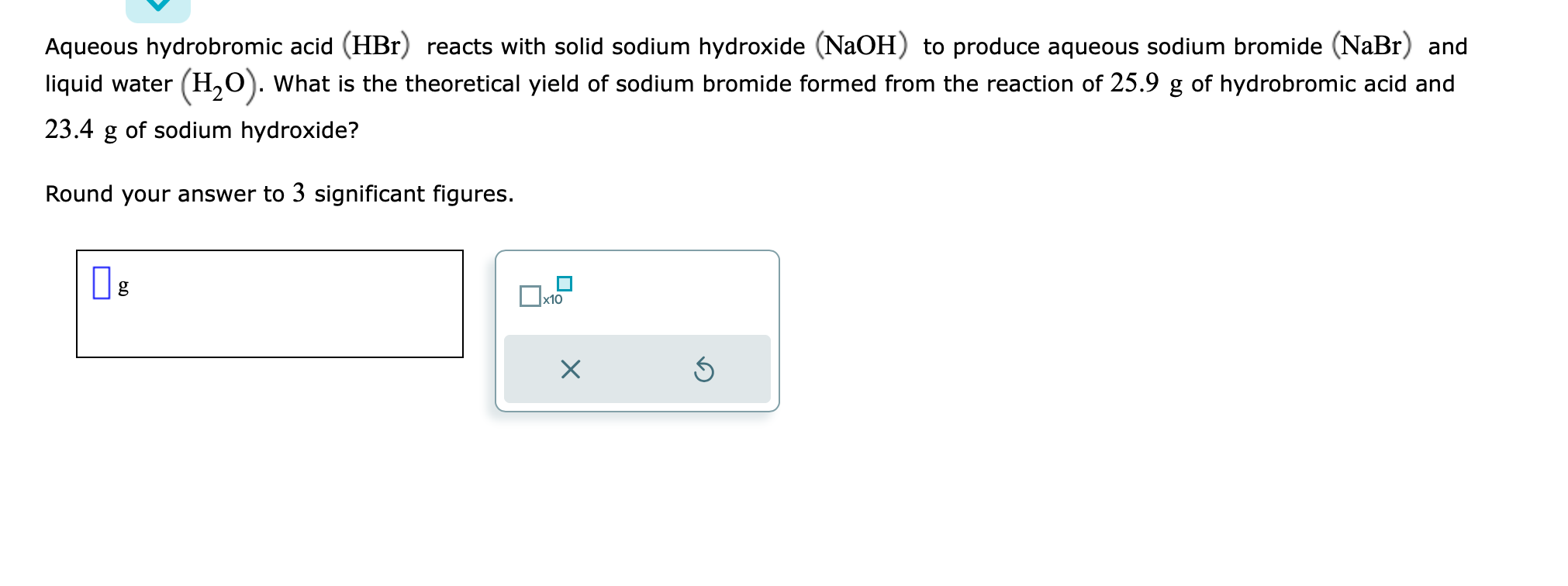Home /
Expert Answers /
Chemistry /
aqueous-hydrobromic-acid-mathrm-hbr-reacts-with-solid-sodium-hydroxide-mathrm-naoh-pa284
(Solved): Aqueous hydrobromic acid \( (\mathrm{HBr}) \) reacts with solid sodium hydroxide \( (\mathrm{NaOH} ...
Aqueous hydrobromic acid \( (\mathrm{HBr}) \) reacts with solid sodium hydroxide \( (\mathrm{NaOH}) \) to produce aqueous sodium bromide \( (\mathrm{NaBr}) \) and liquid water \( \left(\mathrm{H}_{2} \mathrm{O}\right) \). What is the theoretical yield of sodium bromide formed from the reaction of \( 25.9 \mathrm{~g} \) of hydrobromic acid and \( 23.4 \mathrm{~g} \) of sodium hydroxide? Round your answer to 3 significant figures.
Expert Answer
answer) consider the reaction, HBr + NaOH NaBr + H2O molarmass of hydrobromic acid =
